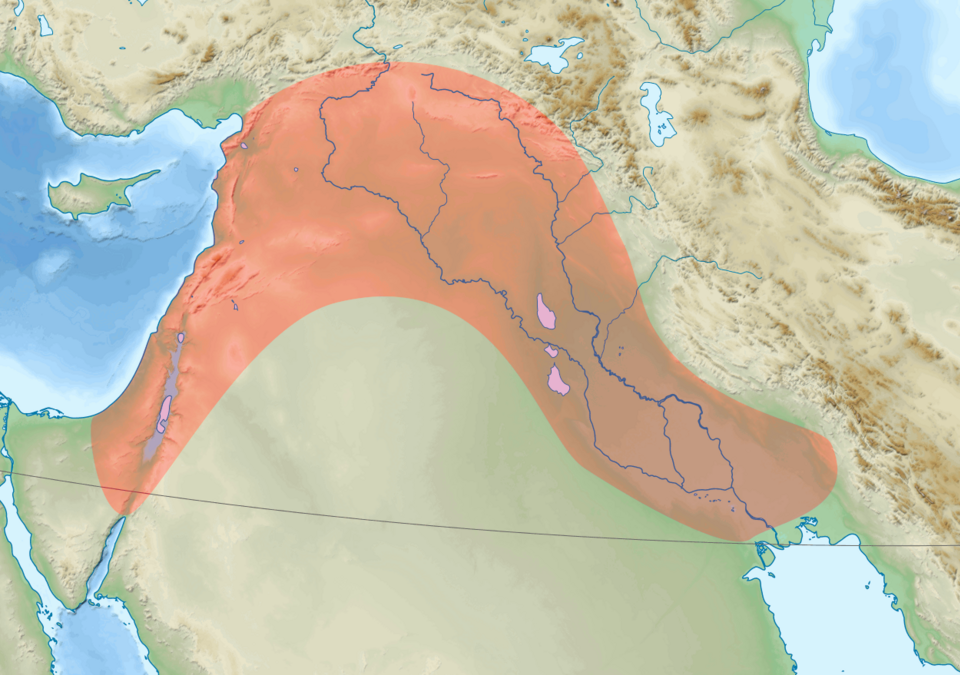The Surprising Ways Inventions and Ideas Spread in Ancient Prehistory
You can learn a lot about humanity from the first technological revolutions of more than 10,000 years ago.
The human capacity for invention is unparalleled. We have developed technologies that have allowed us to survive and thrive far beyond the ecological niches that constrained our ancestors. While our innovation has allowed us to break loose from the constraints of our home continent, Africa, and even our home planet, the actual way in which our species adopts new technologies remains a subject of huge debate among those scientists who study the past. Does one hominid ancestor start to shuffle upright, and the rest follow? Does the first human to loop a piece of string through a shell bead inspire the rest of the species to create the world’s first jewelry? Or do different animals take up the same new adaptation at different times, because it solves a problem that appears in many places?
We know that in some of our closest living relatives, the primates, new technical skills are passed on through direct learning. Macaques, in particular, are responsible for innovative behaviors that have been transmitted through their societies by individuals who have seen and observed them and then adopted them as their own. This is true of behaviors as varied as “hot tubbing” by the macaques of Japan’s northern Hokkaido island and the habit of dipping sweet potatoes in the sea to “salt” them developed by macaques on Koshima island further south.
Many of the technological innovations that have had the greatest impact on our species were first seen about 10,000 to 15,000 years ago in a region that archaeologists refer to as the “Fertile Crescent.” The region encompasses a swathe of land crossing the countries between the easternmost Mediterranean Sea and the Sinai, Arab, and Syrian deserts and up into the Zagros Mountains of what is now Iran. It is a region of famous firsts in terms of radical changes to our species lifestyle: settling down, cultivating plants, and taming the animals we eat are all first attested in this strip of relatively abundant land.
It was along the shores of the Sea of Galilee where we have the first evidence of the wild ancestors of today’s wheat being exploited more than 20,000 years ago, at the site of Ohalo II, reconstructed from the microscopic remains of shattered seeds still clinging to a grinding stone after millennia. From 15,000 years ago, in a corridor stretching up and down the eastern Mediterranean we call the Levant, there comes the first signs of a new way of life for humans; one that involves staying in the same groups and homes all year round, rather than following food around the landscape as we had done for the 300,000 years prior. Those seeds from Ohalo II have grown into entirely new shapes by the time they are uncovered in these new inventions, called villages, and by around 9,000 years ago this new human-friendly type of wheat was well on its way to becoming our first domesticate (domesticate that wasn’t a dog—those we have had for probably 30,000 years). Meanwhile, over the last 10,000 years or so, goats, sheep, pigs, and eventually cattle were all brought into these new human habitations, and bred into the shapes that suit us rather than them: better to eat or easier to manage.
What is even more remarkable about these radical changes in a species that had been living as foragers for hundreds of thousands of years was how fast these new innovations “spread.” Archaeologists in the 20th century dedicated huge amounts of time to tracking the movements of new technologies through the evidence of ancient houses, pots, and bones to work out how people from the Near East had “invaded” Europe with their culture of domestication, and even when the idea of a mass invasion was put to rest, some still claimed that people themselves carried the new ideas of domesticated life. The way we saw human inventions was as hot-tubbing macaques at a larger scale: one clever inventor and her friends and family following behind.
This has large implications for human knowledge. Did it take people literally passing on new skills to spread farming, domestic animals, and year-round lifestyles to all corners of the globe? Is this the only way our species learns something this life-changing?
We are not, as it turns out, macaques. Good scientific evidence has given us dates for a farming and animal revolution in China that happened just a thousand or so years later, but for a totally different crop: rice. The invention of cultivated plants occurred independently, as did other similar innovations like domesticating animals. In fact, around the world, there was an endless series of radical revolutions, some earlier, some later, but all bringing plant and animal life under human management: from the potato and the alpaca in South America to pearl millet and cattle in West Africa.
This phenomenon is called “independent invention,” and it is our strongest evidence yet that every innovation our species has made has been a response to a place and time; that some technologies travel far and wide but, where they don’t, we are perfectly capable of inventing them again.



